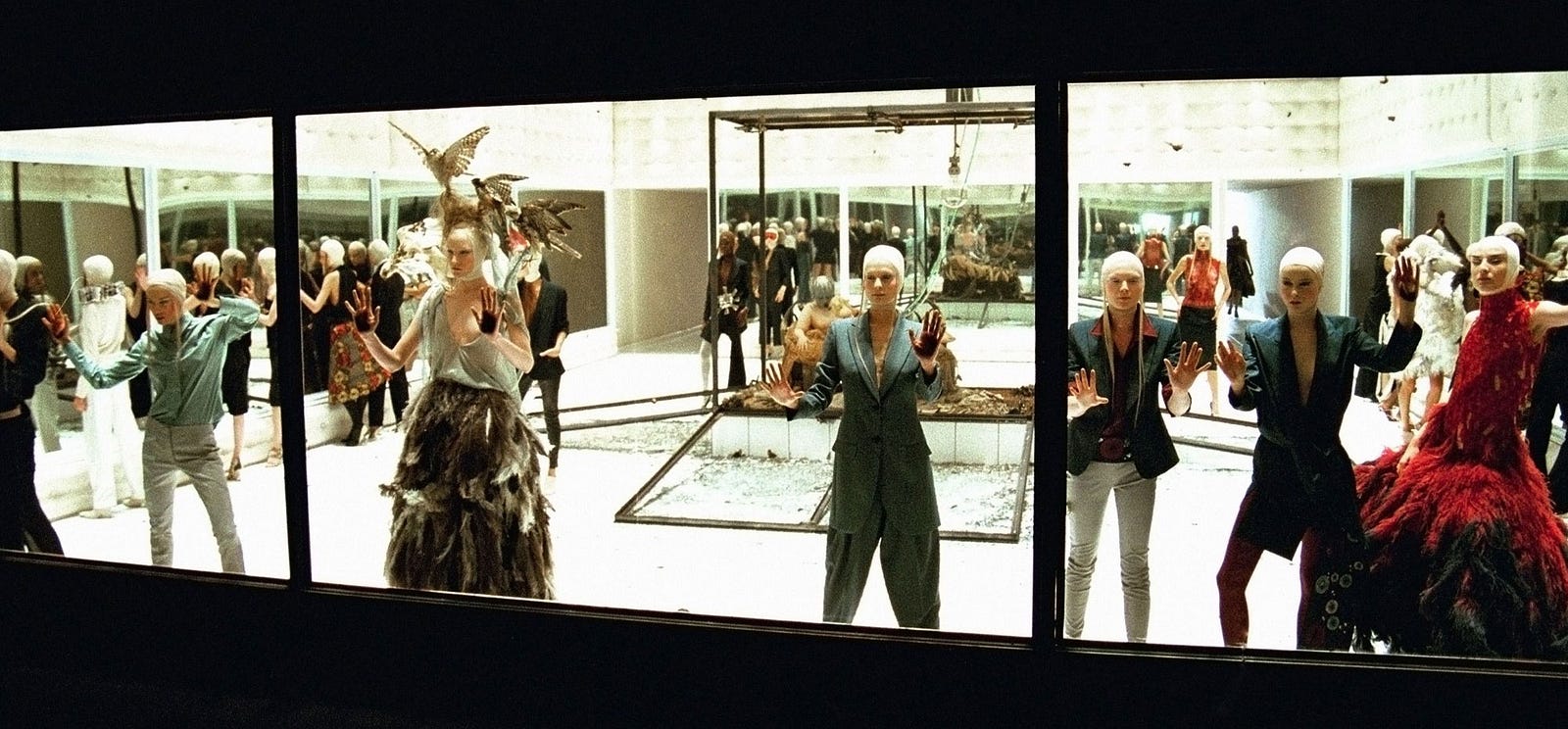Alexander McQueen: A Couturier's Timeline
Alexander McQueen: A Couturier's Timeline
By Paige McKirahan

It is very seldom that a designer steps into the fashion industry and stuns icons with such grace as Alexander McQueen. In celebration of his life, we have elected to spotlight this amazing fashion contributor as his day of birth is fast approaching. The couturier and fashion icon was born on the 17th of March, 1969 in London as the youngest of six siblings. After leaving school at the young age of 16 to pursue apprenticeships with a variety of high-profile tailors like Gieves and Hawkes that were masters of technical clothing construction. This experience was followed by time with Angels and Bermans, where he mastered a variety of pattern cutting techniques, including the razor-sharp style that has become synonymous with the McQueen brand. After this transformative stint, he became employed by tailor and designer Koji Tatsuno for close to a year before he traveled to Milan to be Romeo Gigli’s design assistant. During these apprenticeships, he also attended the Rosetta Art Centre, where he received a recommendation from Yvonne Humble that sent him on to the MA fashion course at Central Saint Martins College of Art and Design. The skills that he learned during his time in these positions quickly earned him a high-class reputation in the industry as a designer with an affinity for flawlessly tailored designs.
This reputation was carried with him to St. Martins, where he was encouraged by the head of his course there to enroll as a student and receive a master's degree in fashion. He went on to do just that, and his 1992 graduate collection was so emblematic that the iconic stylist Isabella Blow famously purchased it in its entirety. Blow became a sort of mentor to McQueen, using her contacts and industry expertise to help launch his career. It was even rumored that she influenced his choice to go after his middle name, Alexander, when he finally had his big break.

McQueen and Blow (source)
During this time, McQueen grew as an artist with other designers in Hoxton, where he designed his second collection that led him to his "right hand woman", Katy England. England was appointed the creative director of Mcqueen's third collection and continued working with him from then on, being his "second opinion" on all of his major works. Following these collections, he then moved on to create the wardrobe for David Bowie's 1996-1997, which opened the door to a plethora of high-profile celebrity collaborations with icons like Bjork, Robert Lepage, Sylvie Guillem, and Russell Maliphant.

McQueen for David Bowie (source)
Through the end of the 90s and the beginning of the 2000s, McQueen built a reputation around his shocking runway displays; his lavish and unconventional style was like nothing the industry had ever seen, incorporating things like holograms and shipwreck scenes into his shows. He became one of the runway frontrunners, being credited with adding tur extravagance and drama to fashion. One of the most dramatic shows in of his career was for Spring/ Summer 2001 displaying a collection dubbed "VOSS". The centerpiece of the show was a class box based upon Sanitarium by Joel Peter Witkin; the box was unlit, making the reflections on the walls seem like large mirrors reflecting the audience's images back to them for over an hour. When the show finally began, the box became lit to reveal a gaggle of moths and a naked Michelle Olley relaxed on a chaise lounge wearing only a gas mask.

A photo from the VOSS show, 2001 (source)
In 1996, Mcqueen was appointed to chief designer at Givenchy, where he worked until 2001. Prior to this departure, he formed a partnership with the Gucci Group and they acquired 51% of his company in 2000. He remained as the creative director until his death, and this new ownership allowed his label to globally expand. He created men and women's ready-to-wear collections, accessories, eyewear, and a variety of fragrances that were available in boutiques all over the world at the conclusion of 2007. He remained at the top of the industry until his untimely passing in 2010, two days prior to the start of London Fashion Week. He still holds his title as one of the most iconic courtiers of all time and has received high honors including "British Designer of the Year" (1996 & 2003) and "International Designer of the Year" (2003). His brand continues to produce stunning collections and the McQueen legacy will live on longer than the industry itself.
Sources:
